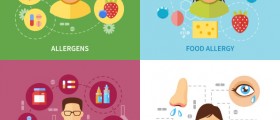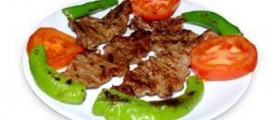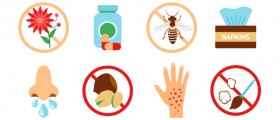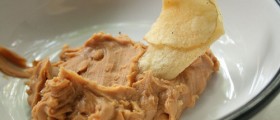
Food allergy can be defined as abnormal immune reaction toward specific component of certain foods. The allergic reaction develops each time the particular food is consumed. Food allergies in children are not so common. Still, if they occur they typically affect children under the age of 4. In majority of cases children develop allergic reaction to milk, eggs, fish and shellfish, peanuts, tree nuts, soybeans, wheat, citrus fruit and tomato.
Symptoms of Food Allergies in Children
Children suffering from food allergies may develop different symptoms and signs. For example, the child may develop severe infantile eczema or skin rash. Furthermore, after consuming specific foods a child may feel nausea, vomit or suffer from abdominal pain and diarrhea. In some cases a child may complain about tingling in the mouth. In extreme cases the patient may develop severe swelling of the face, lips, tongue, throat and eyes. The allergic reaction can also lead to breathing difficulties, wheezing and persistent cough. In extreme cases an infant may become pale and floppy and lose consciousness.
What Causes Food Allergies?
Food allergies develop as a type 1 allergic reaction. The body reacts to specific components of certain foods by producing a class of antibodies called IgE. These antibodies are actually responsible for the symptoms and signs of a food allergy. Fortunately, rather small percentage of all children develop allergy to certain foods. Most of them will eventually outgrow the allergy before the age of three. It is believed that type 1 allergic reaction is inherited.
Food Allergies and Food Intolerance
Food intolerance is defined as an adverse reaction to specific compound of the food or drink. In case of food intolerance there are no immunological mechanisms involved. This makes food intolerance different from food allergy. In food allergy the adverse reaction to certain components of the food is always associated with overreaction of the immune system.
Only a doctor can differentiate food intolerance from food allergy. It is, therefore, essential for parents to take their child to a well experienced pediatrician who will examine the child and perform certain tests prior setting definitive diagnosis.
Treatment for Food Allergies
The cornerstone of treatment for food allergies is elimination of the food which is responsible for the allergy. This is of major importance since even intake of small amounts of food that a child is allergic to may cause anaphylactic shock and its fatal consequences and complications. Anaphylactic shock is a life threatening condition. It requires prompt medical attention and treatment.
There are a couple of ways of minimizing the likelihood of certain food allergies. They include delaying the introduction of solids to 4-6 months and exclusive breastfeeding for the first 6 months of a child's life.

















Your thoughts on this
Loading...